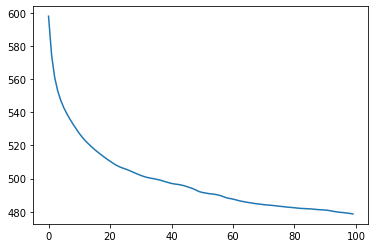

Of the \((i+1)\)-th module in the sequential. The output of the \(i\)-th module should match the input Graph ( DGLGraph or list of DGLGraphs) – The graph(s) to apply modules on. rand ( 32, 4 ) > net (, n_feat ) tensor(,, , ]) forward ( graph, *feats ) ¶ erdos_renyi_graph ( 8, 0.8 )) > net = Sequential ( ExampleLayer (), ExampleLayer (), ExampleLayer ()) > n_feat = torch. _init_ () > def forward ( self, graph, n_feat ): > with graph. Module ): > def _init_ ( self ): > super (). > import torch > import dgl > import torch.nn as nn > import dgl.function as fn > import networkx as nx > from dgl.nn.pytorch import Sequential > class ExampleLayer ( nn. Mode 2: sequentially apply GNN modules on different graphs add_edges (, ) > net = Sequential ( ExampleLayer (), ExampleLayer (), ExampleLayer ()) > n_feat = torch. edata > return n_feat, e_feat > g = dgl. _init_ () > def forward ( self, graph, n_feat, e_feat ): > with graph. > import torch > import dgl > import torch.nn as nn > import dgl.function as fn > from dgl.nn.pytorch import Sequential > class ExampleLayer ( nn. Score Modules for Link Prediction and Knowledge Graph Completion.Right: A technician-artist working on the set of “The Boxtrolls” (2014). Center: The two evil and dangerous aunts from “Kubo and the Two Strings” (2016). Left: Coraline in the Other garden from “Coraline” (2006). Laika Studios in Portland Oregon has created some wonderful stop-motion movies - sequential art. It will initialize the weights in the entire nn.Module recursively. Do we really need this feature that will bloat up our codebase?” Sequential or custom nn.Module: Pass an initialization function to torch.nn.Module.apply.
Pytorch nn sequential code#
This often happens with open source code libraries where anybody can toss code in, and there’s nobody in overall charge saying, “Wait a minute. In my opinion, one of the biggest design weaknesses with the PyTorch library is that there are just too many ways to do things. The equivalent network using the Sequential approach: The Module approach with Xavier uniform weight and zero bias initialization: The examples show that as networks get more complex, the Sequential approach quickly loses its simplicity advantage over the Module approach. Here are Module and Sequential with explicit weight and bias initialization. Notice that with Module() you must define a forward() method but with Sequential() an implied forward() method is defined for you.īoth of the examples above use the PyTorch default mechanism to initialize weights and biases. However, for non-trivial neural networks such as a variational autoencoder, the Module approach is much easier to work with. cant go inside the nn.Sequential object and initialise the weight for its members. If you’re new to PyTorch, the Sequential approach looks very appealing. In PyTorch, layers are often implemented as either one of torch.nn. The exact same network could be created using Sequential() like so: The Module approach for a 4-7-3 tanh network could look like: The difference between the two approaches is best described with a concrete example.

The Module approach is more flexible than the Sequential but the Module approach requires more code. You can use tensor.nn.Module() or you can use tensor.nn.Sequential(). Somewhat confusingly, PyTorch has two different ways to create a simple neural network.


 0 kommentar(er)
0 kommentar(er)
